A second Design Advice hearing has been held for the remodel of the Lloyd Center West Anchor, formerly home to Nordstrom. Waterleaf Architecture, Interiors & Planning and 505 Design are working on designs to renovate the building for multi-tenant use and rebuild the existing plaza. At levels 1 and 2 the existing mall concourse will be extended into the building. A new main entry to the Lloyd Center will be created where the entry to Nordstrom was previously located. The existing entry to the mall, located at the corner of the plaza, will be closed and filled in with new retail space.
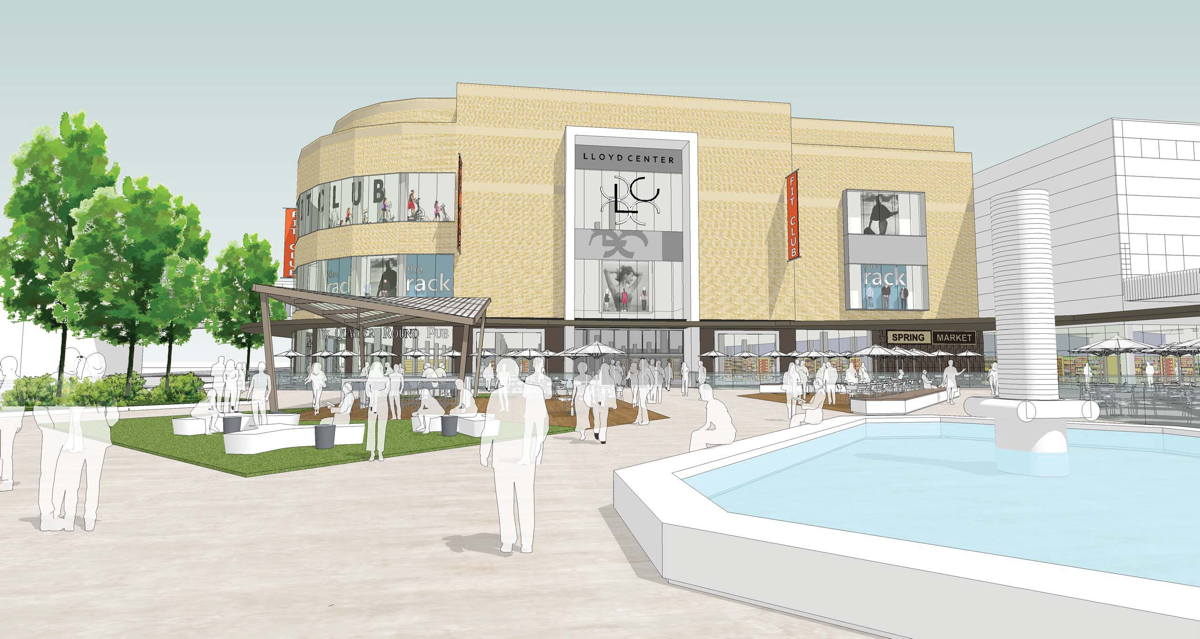
The Lloyd Center west anchor building was constructed in 1989, at the same time that the mall was covered from an open air mall to an enclosed mall. The building formerly housed Nordstrom, which closed its Lloyd Center location in January 2015. In February 2015 Nordstrom sold the building for $7.5 million to Cypress Equities, who own the rest of the Lloyd Center.
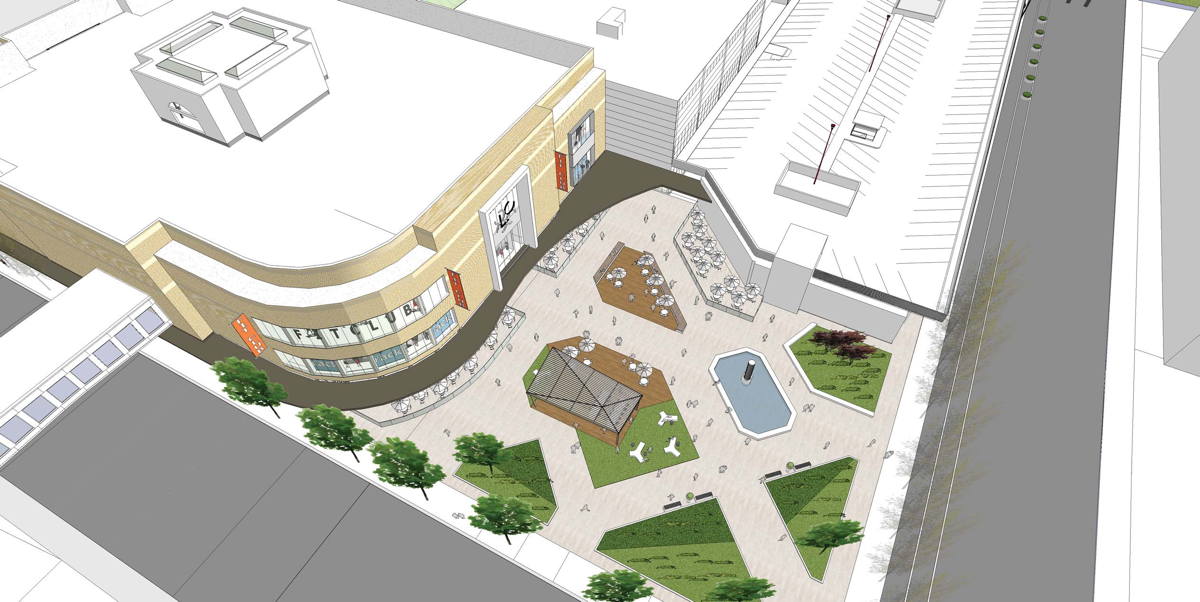
Since purchasing the mall, Cypress Equities have embarked on a number of projects to rejuvenate it, including the creation of a new plaza and entry adjacent to Macy’s, which is currently under construction; a rebuild of the ice rink and addition of a helical stair; and a remodel of the Lloyd Mall 8 cinemas into office space for Providence Medical Group. The east anchor building, currently occupied by Sears, will be renovated for multi-tenant use with new cinema screens added. As part of the 1400 NE Multnomah and 1510 NE Multnomah developments large areas of existing surface parking are planned to be redeveloped as housing and retail.
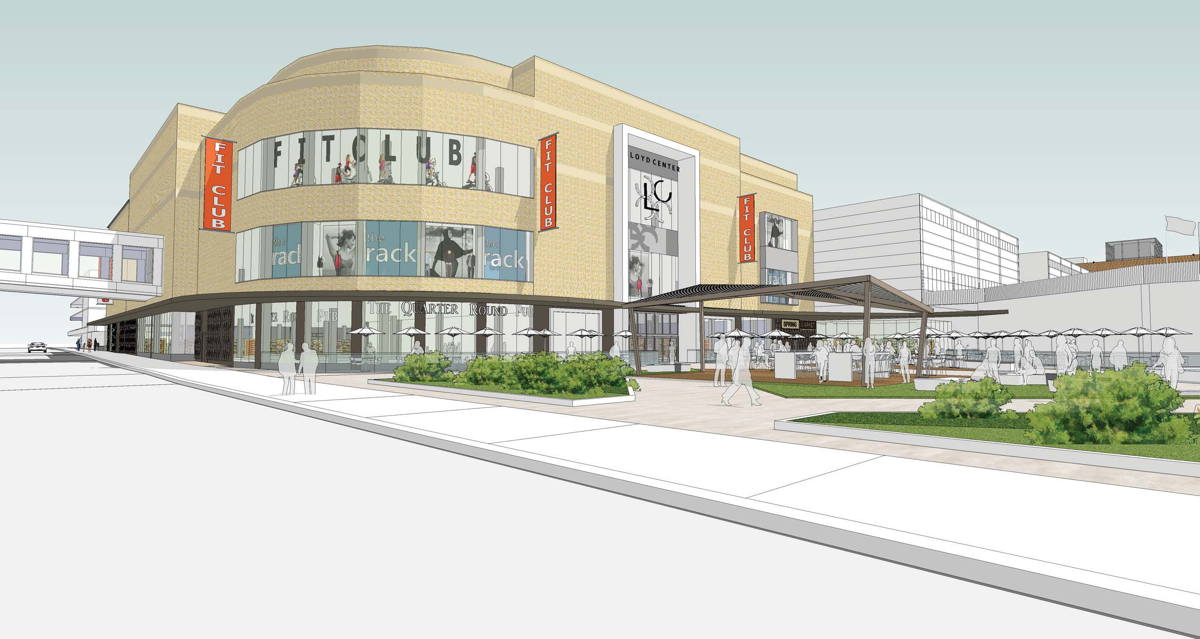
Exterior work to the building will include new storefronts facing the existing plaza; new horizontal bands of glazing where the building curves onto NE 9th Ave; and new slimmer profile canopies. Although tenants for the spaces are not yet identified, the owners imagine that ground floor retailers could include restaurants or cafes that would spill out onto the plaza. Work in the plaza would include new hardscape and stormwater planters.
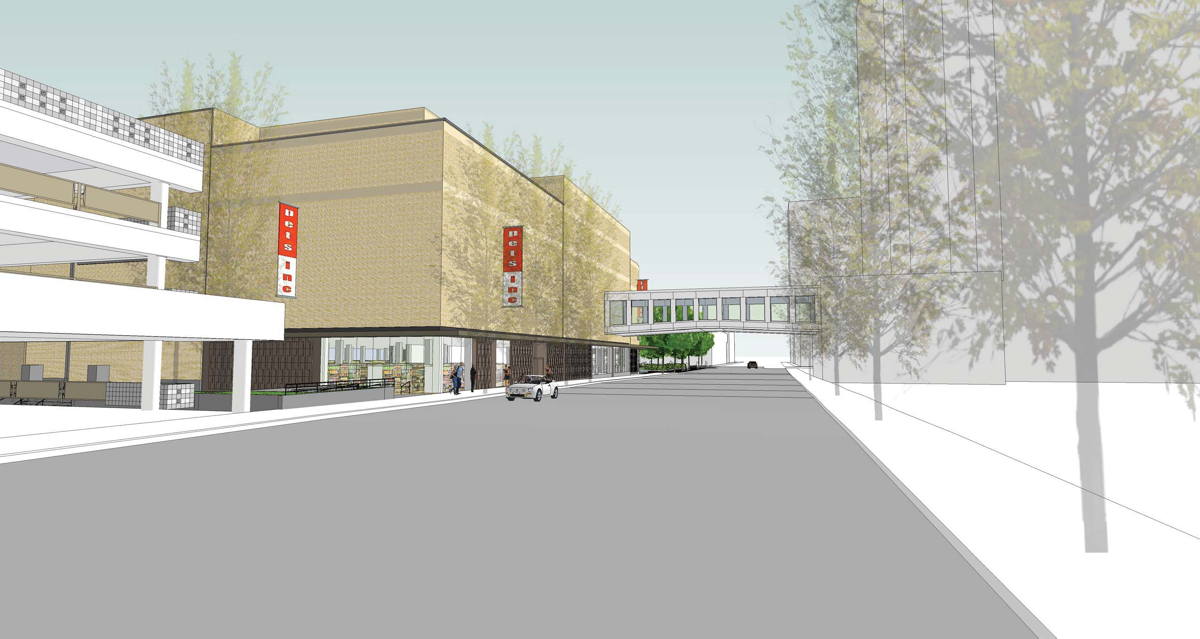
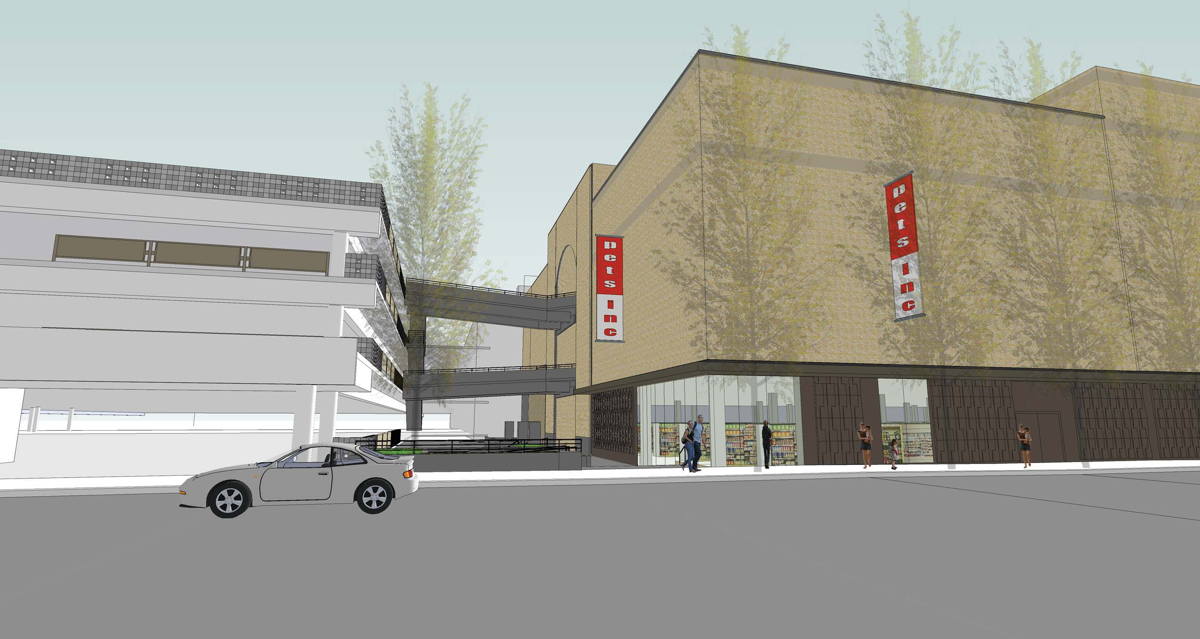
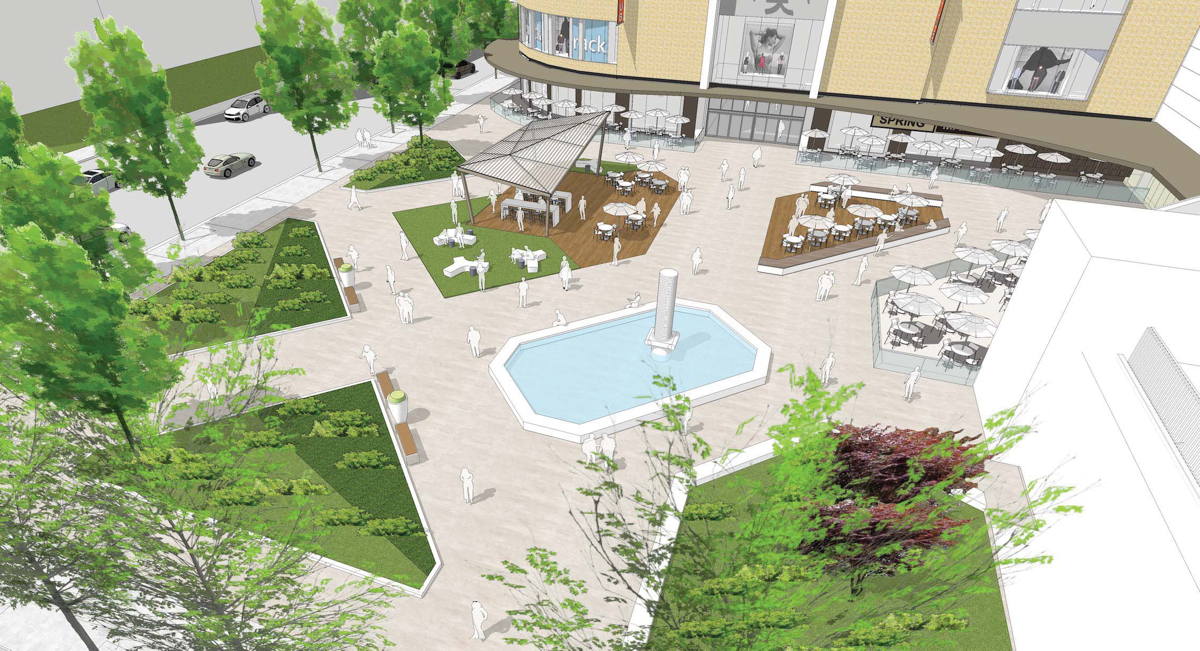
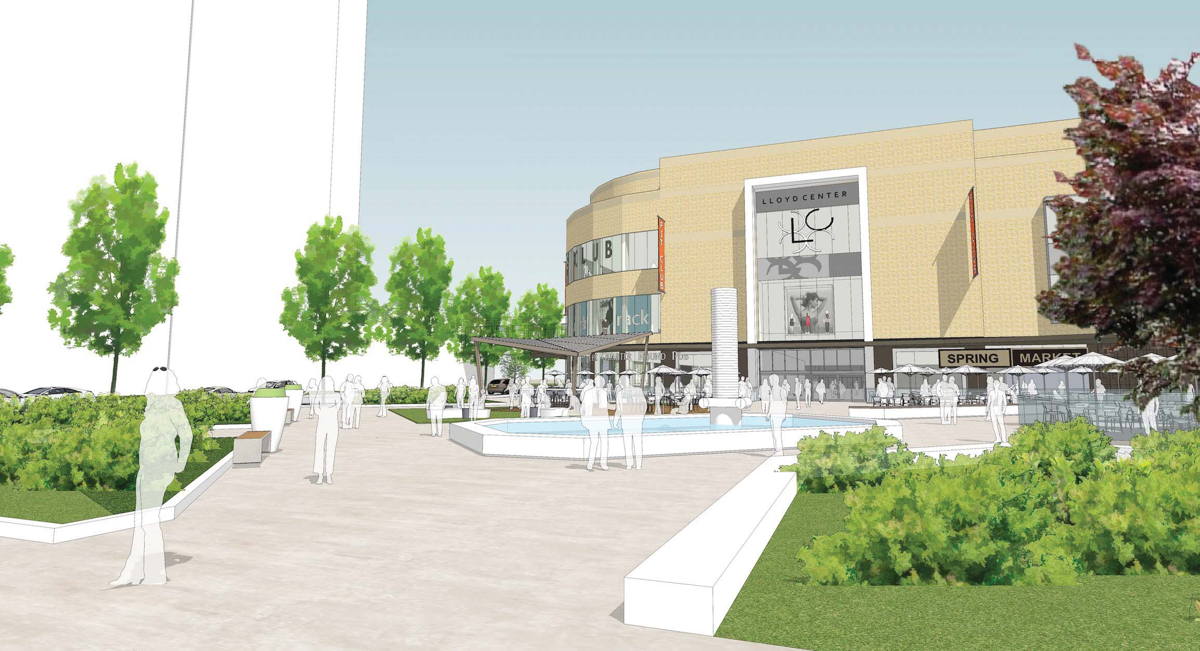
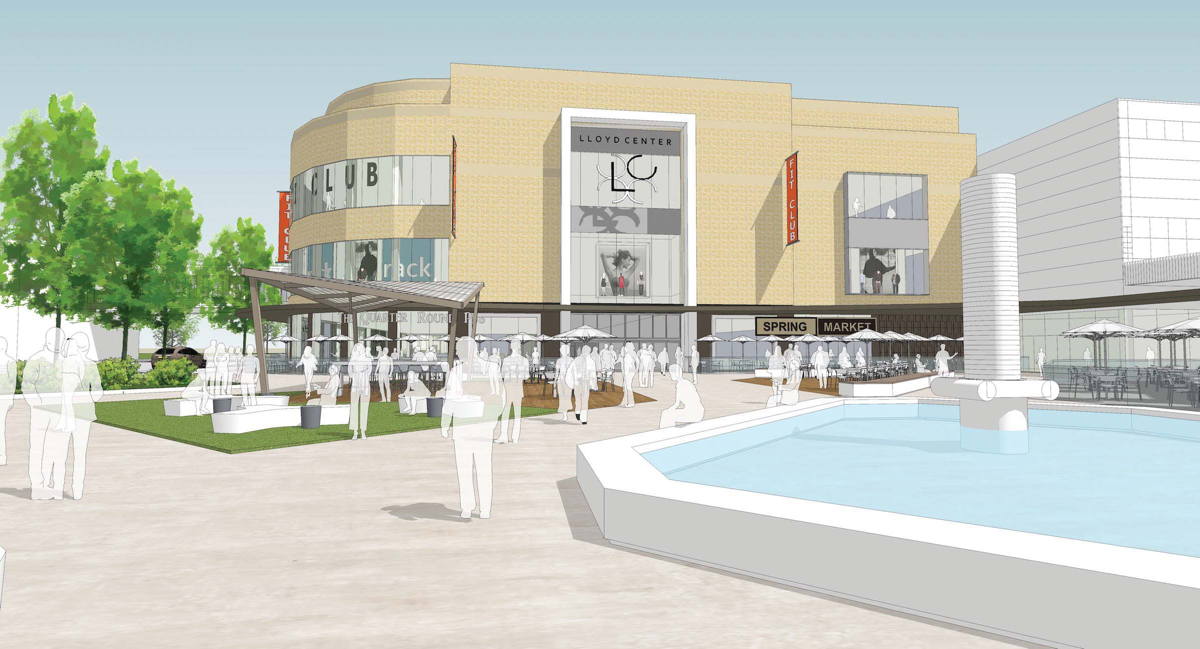
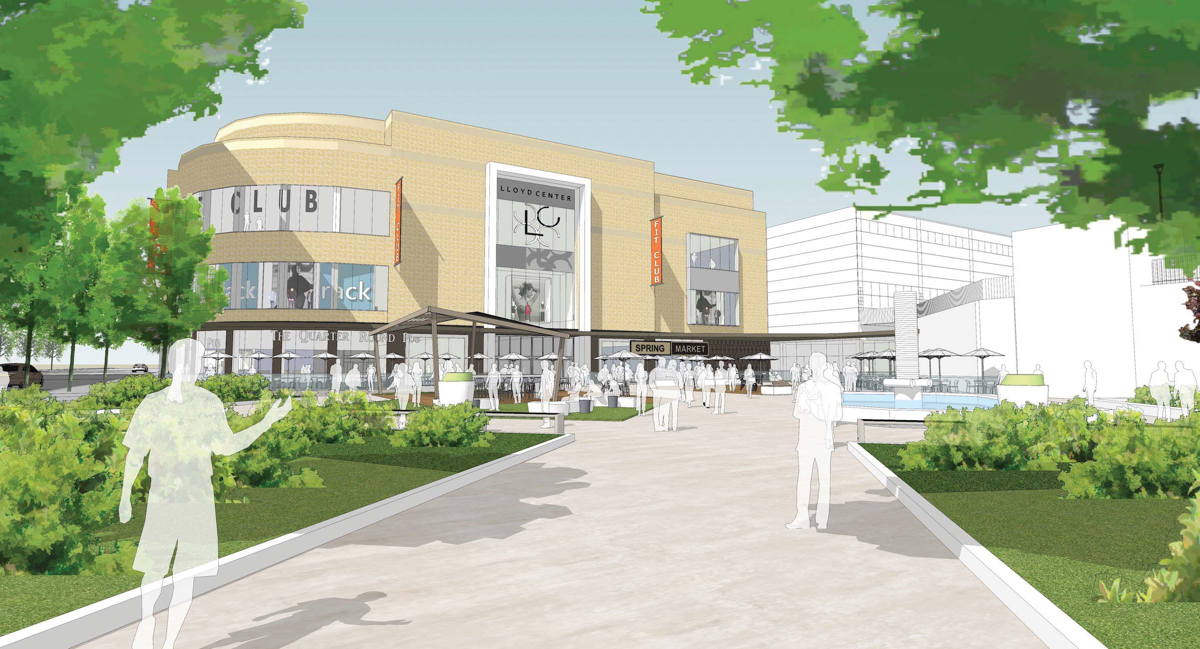
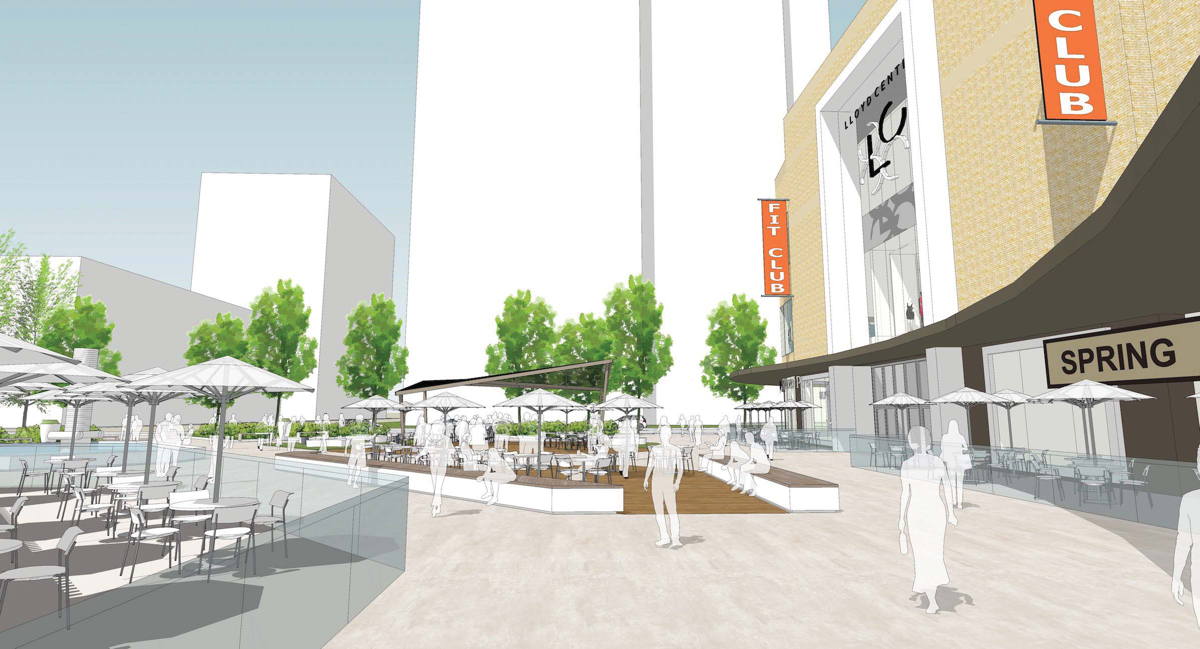
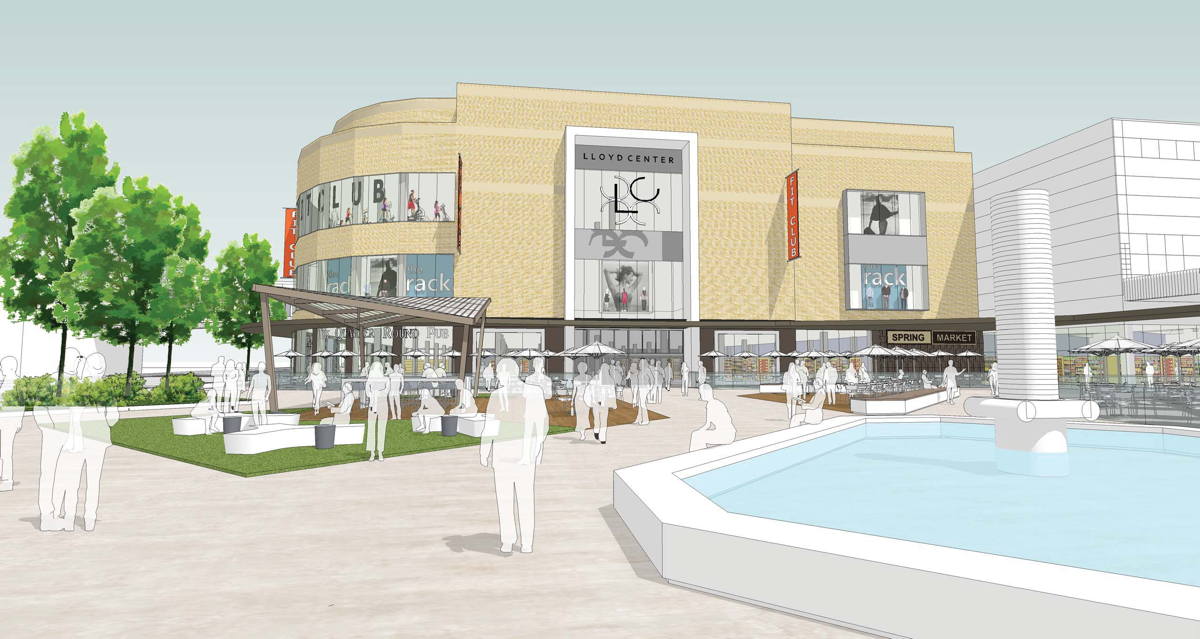
Following an initial design advice hearing in March, the second hearing was held on May 11th. In response to comments received at the first hearing the scope of work was expanded to include more of the plaza. A staff memo, published before the hearing, outlined potential areas for discussion, including: the plaza design; the proposed entrance; and the materials and details. Much of the discussion was centered around how the plaza would work when it is redesigned. During the hearing Commissioner Livingston offered her thoughts:
I think you’re definitely moving in the right direction. Given that you have a limited budget, focusing on the corner is definitely the right thing to do, because this will accomplish more of the guidelines in a more substantive manner than trying to distribute that money broadly. This is an incredibly important corner for the neighborhood. With that in mind, as far as the architecture goes the revisions to this corner are good. They really do reinforce this. One thing I had been looking for at the last hearing was a billboard quality to the entry that made it really clear that it is the entry, and I think this does that much more successfully than the last scheme. This box [to the right of the entry], just the fact that it introduces another architectural language, if you can find a way to make that transparent then it works, but just as an application to the exterior I’m not sure that works… it could just be the way that it’s detailed, but as an applied box to the exterior of the building it doesn’t seem to follow in the same language that you have here and also at the Holladay Park entrance. I would encourage you to continue to study that.
As far as the plaza goes it’s not clear yet if it’s a public space for the neighborhood and people who are coming to this space, or if it’s spill out space of private space. I think a lot of that has to do with the fact that the plan basically formalizes circulation. And I understand; campus planners do that all the time. But in this case so much of the area is given over to formalizing the circulation that the spaces that people occupy are left over. It seems like it needs a more intentional approach to place-making. It needs to take a firmer position about whether it’s public and part of the neighborhood, or it’s private and part of the mall. I think in terms of achieving the guidelines it should be more public, and it should perform more like the other outdoor spaces in the neighborhood do.
In order to gain approval, the Lloyd West Anchor remodel will be required to go through a Type III Design Review, with public hearings in front of the Design Commission.
Drawings
- Plan – Overall
- Plan – Level 01 (Existing)
- Plan – Level 01 (Proposed)
- Plan – Level 02 (Existing)
- Plan – Level 02 (Proposed)
- Plan – Level 03 (Existing)
- Plan – Level 03 (Proposed)
- Elevations
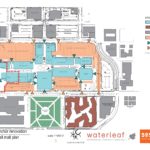
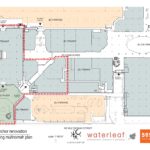
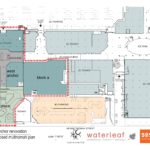
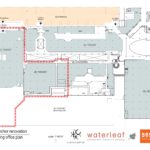
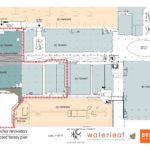
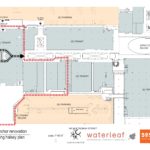
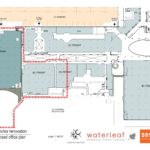
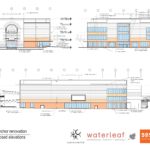
To my eye the “public” space does not really invite people to linger. The non-circulation areas are cut off from each other like islands, some looking uncomfortably exposed. I question whether the many humans shown occupying the renderings will actually materialize if the space is built as shown.
I do sympathize with the challenge the architects face. The Lloyd Center has been a gigantic aircraft carrier dropped into the neighborhood, obliterating the preexisting small street grid pattern and creating a formidable 3-block-by-7-block, east-west wall that north-south walkers and bicyclists have to circumnavigate. Involuted from the beginning, it was designed as destination for people from mostly beyond the neighborhood, and it turns its back on the surrounding neighborhood. A careful redesign of this southwest corner is a small step at undoing a little of the damage done by the Lloyd Leviathan. Unfortunately, Cypress has failed to make a much more meaning effort to integrate the “Center” with its community by, for example, creating a wide north-south pedestrian and bike way would extend 11th avenue, bisect the mall and lead to Holiday park.
I suspect that more than financial considerations deterred them from such a step. Doing so would allow public space, which is more democratic, unruly, and unpredictable, to inject itself into the private space of the mall, which is more easily controlled. I dream of the day an enlightened owner of the Lloyd Center returns some of the seventeen blocks of public street the city gave to the original developers and makes a truly committed effort to restore the interconnected fabric of that neighborhood. It’s long overdue.